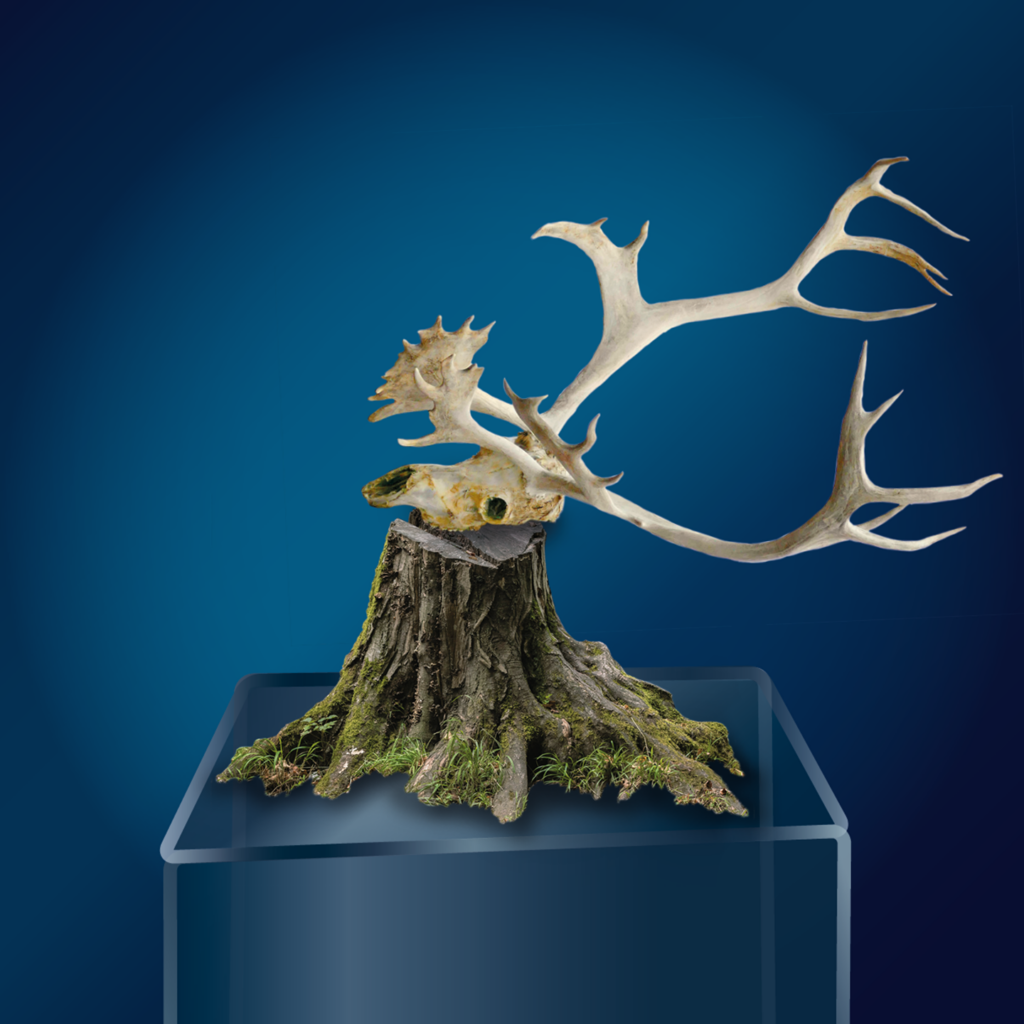In the picture, you can see an art installation that attracted a lot of attention in the 2020s. Here, Sami artist Sanna Viertotak chose to transform parts of the island of Djurgården in Stockholm into a clearcut by using projections and large screens to put pressure on the state-run company Sveaskog and its political management.
The debate on how Swedish forests should be used had been going on for a long time. The most commonly used method in industrial forestry at that time was clearcutting. The forest industry planted large areas with only a few species of tree to then cut down these areas bit by bit.
Environmental activists and Sami villages protested, often putting their bodies in harm’s way, highlighting that clearcutting was harmful to biodiversity, the climate and the livelihoods of the Sami people. The forest companies, on the other hand, claimed that clearcuts were always replanted, thus absorbing more carbon dioxide while the wood was used to replace fossil energy or as a building material where bound carbon could be stored.
Critical researchers carried out careful measurements showing that a large proportion of carbon was stored in soil and trees and that much of this was released when forest areas were clearcut. It was also clear that large machinery, removing vegetation and planting large areas with trees of the same species, which were also of the same age, made it difficult for many species to survive in the forest.
It took many years of researchers, activists, journalists and progressive forest owners debating and campaigning to establish more sustainable forestry practices. But then, on a cold winter day in 2028 in a Stockholm boardroom, a decision was made that is now seen as the turning point. Under pressure from several stakeholders, Sveaskog made the historic decision to exclusively use clearcut-free methods. The Church of Sweden and other large landowners chose to do the same in the coming years.
Switching forestry practices takes time. Trees must grow for many decades before they can be cut down. Today, almost thirty years later, we have come a long way.
Forests offering high environmental and cultural values are fully protected and most of the forest is not subject to clearcut practices.
Clearcut: The barren area that remains when almost all trees are cut down at the same time. Clearcutting is the most commonly used forestry method in Sweden today. An alternative is continuous cover forestry.
Natural forest: A forest working the way forests did before people started to cut them down and make clearcuts. Here, we find trees of all ages and many old or dead trees. The old and dead trees play an important role as homes and food for many species. In a natural forest, for example, there may be old stumps left after some trees were cut down a long time ago, but the forest still works as a natural forest.
This text is part of the future scenario and study material Beyond the Fossil Era.
